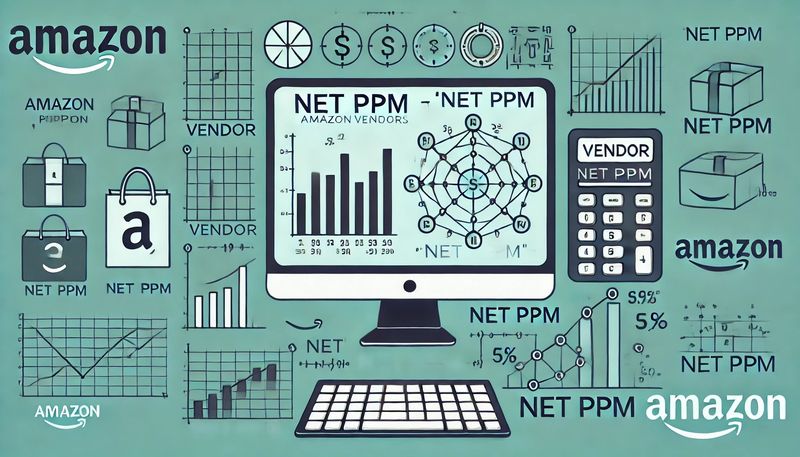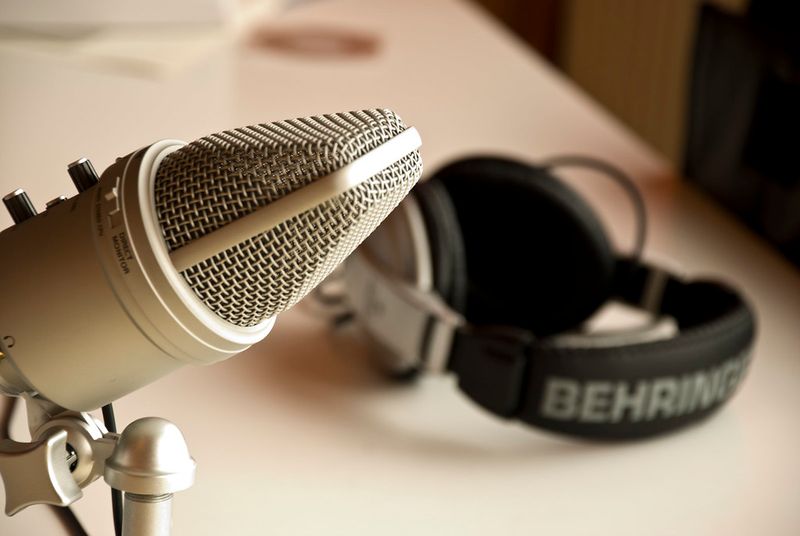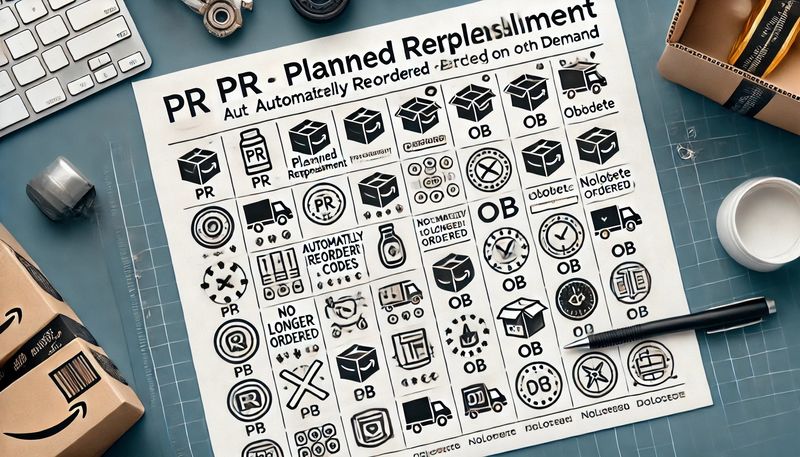At the beginning of your sales career - apart from registering your business and dealing with the authorities - you have to find the right product. However, before you start your product research, you should think about some basic tactical and strategic aspects. These can have a major impact on your long-term success.
Strategic thinking
Family of products
If you are successful with your first product, it will not be long before you launch your second, third and fourth product. You can increase your success in the long term if these products are related in some way, for example if they come from the same category (e.g. "kitchen utensils"). If this is the case, the products will - in the long run - push each other, especially because the buyer of one product often gets an offer of the other product ('customers who bought X also bought Y').
Therefore, don't choose just one product in the beginning, choose ideally a niche in which your other products would fit. If, on the other hand, you have entirely different products, you may be wasting potential.
The selection for a specific product family also has an effect on the search for a suitable supplier. You may prefer a supplier who may be a little more expensive, but who offers a wide range of products from which you can later choose other products.
Product positioning
The nature and marketing of your product probably have the greatest impact on your long-term success. In the introduction we have already mentioned that your product must have a competitive advantage in order to be successful in the long term. If you sell a product that can be sold by anyone else, this will inevitably lead to a price war in the long run, which you will hardly win as a small seller. So you have to differentiate yourself from the competition in the medium to long term and you can do this, for example, by having your own (strong) brand or by using product features that are difficult to copy.
The following overview shows the possible differentiation strategies:
| Own brand | Not own brand | |
|---|---|---|
| Own product | Product and brand oriented differentiation ("Brand") | Product oriented differentiation |
| Foreign product | Brand-oriented differentiation ("private label") | Niche or pricing strategy ("no-name") |
Your own brand
One decision that you should make at a very early stage is whether you sell your product under your own brand or not. Having your own brand offers you as a seller two advantages:
- A strong brand creates trust among customers
- Having your own brand helps you to keep competitors away.
A strong brand creates confidence among customers
Established brands create trust. However, this only works if the consumer knows the brand and is already confident with it.A brand that the consumer does not know will only help you to a limited extent. Building a brand is more like a marathon than a sprint. However, if you have established your own brand, you can usually achieve a higher price.
Having your own brand is particularly worthwhile if you decide to build up a product family. For example, if you sell several products in the category "kitchen appliances", a common brand can help to generate higher sales through additional sales ("cross-selling"). If the consumer trusts a product of the brand "XY" and sees another product of the same brand, an additional purchase is more likely than if it is an unknown brand.
The decision to use your own brand is often followed by the decision to use your own packaging. This investment in design also helps you to differentiate yourself from the competition, especially since the standard packaging of manufacturers is often plain, unattractive or in English.
When selecting suppliers, you would then have to make sure that the supplier offers "OEM". The term OEM (Original Equipment Manufacturer) offers different interpretation possibilities depending on the environment. It means that the supplier has the option of adapting the product to your requirements to a certain extent, e.g. by printing, embossing, etc. your own brand or the production of an individual product packaging. In this case, of course, higher costs are incurred, which must be included in the overall calculation. Also, the minimum order quantity is often higher in these cases, as it is not worthwhile for the suppliers to start the printing press for only 500 pieces.
Having your own brand helps keep competitors off your back.
Having your own brand also helps you to stand out from the competition. On Amazon, all sellers have the (theoretical) possibility to sell all of the offered products, as long as they have the respective distribution rights and sell exactly the same product.
So if you purchase a product in China and sell it on Amazon without any adjustment, another merchant could attach itself to "your" listing tomorrow and offer the product at a lower price, for example. This alone would be annoying, because in this case a price war would ensue that would wipe out all margins.
In the worst case, it could even lead to you losing the sovereignty over the listing to your new competitor and suddenly no longer having any influence on the title, product description or the images.
Even in these cases your own brand can protect and help you to enforce your claims. Amazon therefore offers trademark owners a special program to help them better protect their rights.
Trademark research
Before you decide to use your own brand, you should conduct a brand research. This way you can see whether your desired brand is still available for the desired category. In order to check whether a brand is still available, it is advisable to search in various online databases. The best known are:
DPMAregister:
The German Patent and Trade Mark Office (DPMA) maintains a database called "DPMAregister" where you can find national German trademarks which have been registered, applied for, cancelled, withdrawn or refused.
Link: https://register.dpma.de/DPMAregister/Uebersicht?lang=en
eSearch plus:
With eSearch plus you can find Community trademarks that are valid in the European Union and therefore also in Germany, as well as internationally registered trademarks.
Link: https://oami.europa.eu/eSearch/
Romarin:
With ROMARIN you will find internationally registered trademarks that have been applied for, registered and cancelled according to the Madrid system and in which countries they are valid.
Link: http://www.wipo.int/romarin
Detailed instructions can be found on the homepages of the respective providers. Despite extensive research, the risk of trademark infringement cannot be excluded. Names and logos used in the course of business may infringe other trademark rights, even if they have not been entered in the trademark registers. Therefore, in addition to the three presented databases, you should also search for identical or similar names in Internet search engines (Google), telephone directories, commercial registers, title protection notices and/or other product directories.
When researching brands, you can support various service providers, in particular patent attorneys, attorneys-at-law or patent information centers. They undertake searches for identical trademarks and complex similarity searches or provide access to non-official trademark databases for which a fee is charged. Patent attorneys and attorneys-at-law will also help you interpret the search results and answer questions about property right infringements.
Application for your own trademark
If you want to use your own trademark in the long term, it is advisable to register it at the German Patent and Trademark Office. An application is not obligatory, but without registration it is possible for someone else to apply for your trademark and then assert corresponding rights. If your brand is not exactly known nationwide at this point in time, it makes no difference whether you have been operating on the market with the brand name for a long time.
But what exactly can actually be registered as a trademark?
"All characters, in particular words, including personal names, designs, letters, numbers, sound signs, three-dimensional forms including the shape of goods or of their packaging, and other presentations, including colours and combinations of colours, which are capable of distinguishing the goods or services of one undertaking from those of others may be protected as trade marks". (§ 3 Abs. 1 trademark law (dt. Markengesetz)).
The most common forms of brands are word and figurative brands or combinations of both. Anyone can register trademarks, a trade is not necessary.
In addition to the trademark itself, you must also indicate the area for which you wish to apply for the trademark. For this purpose, the DPMA provides the so-called list of goods and services, which follows international standards.
The application of the trademark at the DPMA is a necessary prerequisite to obtain protection. However, the registration alone is not sufficient. You must also use the trademark in business dealings. Incidentally, the DPMA does not check when filing the application whether identical or similar trademarks already exist in the respective classes. This is why a search is so important at the beginning, otherwise you may find that other trademark owners challenge your application.
The registration of a trademark in three classes costs around 300€ and can also be done online.
Own vs. external product
When choosing a product, you must decide whether you want to distribute an existing product or develop and sell a completely new product. Intermediate stages of these two forms are also possible, e.g. the adaptation of an existing product in terms of colour, shape or branding.
This is where risk and sales potential go hand in hand. If you have a unique product, you may be the only one who can satisfy certain customer needs.
This is countered by risks in production and sales. Sales risks arise because no one can predict in advance whether a new product will be successful. However, if you sell an existing product for which market data is available, you can at least exclude the demand risk (is the product in demand by the market?). On the other hand, you usually have more competition.
Production risks exist because the development of new products is comlex and usually requires several adjustments before a product is ready for the market.
Many sellers therefore start their career with an existing product, which they sell on the domestic market with little or no adaptation (price or niche strategy). The next step is often the adaptation of an existing product with regard to the own brand ("private labelling"), if necessary with additional functions and/or a new design.
Sales people with the necessary know-how and financial background then often start to develop their own products in order to create unique selling points.
Tactical considerations
After the more strategic considerations, you will now be given a number of concrete tips that you should bear in mind when choosing a product. Some of these tips exclude specific products altogether, while others are designed to ensure profitability or ease of use.
Restricted and prohibited categories/products
Amazon has categories that require special permission from Amazon before you can offer and sell products in that category. As of January 2016 these are the categories:
- Drugstore, Personal Hygiene & Health
- Jewellery
- Weapons
- Collectibles
To obtain such permission, you must first contact Amazon support. Do this before you buy products from these categories.
There are also categories/products that are generally excluded from sale. These include:
- Mobile phones with subscription
- Magazines and newspapers
- Tobacco products
- Gift cards and vouchers
- Prescription drugs
- Weapons and ammunition
- Photo development
- Plant protection products that are not approved by the Federal Office of Consumer Protection and Food Safety for the 'home and allotment garden' sector
- Spirits, spirituous beverages or food containing spirits in more than negligible quantities
- Parts of whales, dolphins, sharks, elephants (including ivory) and other animals and plants covered by species protection legislation or items produced therefrom
- Used cars/car parts
- DVDs, other than DVDs bearing the relevant FSC/USK markings where required, and regional code '2', '0' or all regions
- Blu-rays, other than Blu-rays, which have regional code 'B' or are region-free and bear the relevant FSC/USK markings where required
If you are planning to ship via Amazon, there are also products that Amazon is very likely or possibly refusing to accept. In this case you would have to organize the shipping yourself:
- The size exceeds 150 cm (strap size greater than 3m)
- The weight exceeds 30 kg
- The unit could require (according to Amazon) that the shipment has to be handled by a LTL carrier (LTL = Less than Truck Load, a LTL carrier carries goods that a parcel service does not carry due to weight and/or size)
- Items that do not pass the drop test unscathed, where they are dropped from a height of 80 cm on four different sides and one corner
- Items that do not pass the Vigorous Shaking Test without damage, in which no granules or granular materials may trickle out after 30 seconds of vigorous shaking
- Sharp objects that are not packaged in such a way that the blade tips are not exposed at any time during the shipping process
- Living animals, plants of any kind
- Products that must be frozen or deep-frozen
- Products containing chocolate cannot be accepted and stored in the period from May 1 to October 14 ("summer break")
- Units with expiration dates not at least 15 months distant on delivery or, in the case of food and beverages, with less than 70 days to the expiry date
- Dangerous goods or products that are subject to official or legal restrictions.
- Jewellery or body ornaments (including bracelets, necklaces, anklets, watches, watch straps, brooches, earrings or rings) with a value of more than EUR 500
- Products that have been publicly recalled by a product recall
- Products that are not marketable in all countries in which they are intended to be offered, or which may not be offered or sold for other reasons (e.g. products without the required information, labels, warnings, instructions for use, list of ingredients, etc. - in all required national languages)
- Products where the packaging is not completely closed and sealed
Sufficient margin
Try to make sure at the start that your product offers sufficient margin. A rule of thumb is that the net purchase price from the supplier should no longer account for a quarter of the later gross sales price.
Example: If a product costs 10 USD in purchasing (currently approx. 9.40 Euro), a sales price of approx. 38 EUR including VAT should be achieved later on.
The background is that various other costs are added to the purchase price, including freight costs, Amazon commission, shipping and much more. With this rule of thumb you are always on the safe side.
Minimum and maximum price
Also make sure that the product is neither too cheap nor too expensive to sell. If the product is too cheap, then your absolute profit is too low, even if the relative margin is reasonable. If the product is too expensive, you have to take a high investment risk depending on the minimum order quantity.
A rule of thumb is: The product should cost a minimum of 15 euros and a maximum of 50 euros. This is a price range in which many customers make so-called "impulse purchases".
Height and weight
The rule here is: the lighter and smaller, the better. Why? Small and light products are clearly (!) cheaper and can be imported more quickly, as they cause less freight costs under the same circumstances. Small volume and light weight items can be conveniently sent by air freight. Should your stock be approaching the zero line faster than expected, you can quickly order new goods via air freight. Large and heavy objects tend to be transported on the ship.
Customizability
Also check whether the product - if you intend to do so - can be individualised. This can include the attachment of your own brand to the product, special packaging or the modification of selected product features. This way you keep the competition off your back, who otherwise orders the same product and, in the worst case, takes over your whole product description and simply reduces your price.
Demand situation
Absolute demand
One of the most important aspects is to check whether there is any demand for the product at all. However, Amazon offers you appropriate help here, as Amazon specifies the so-called "bestseller rank" (BSR) for each product.
Here is an example:
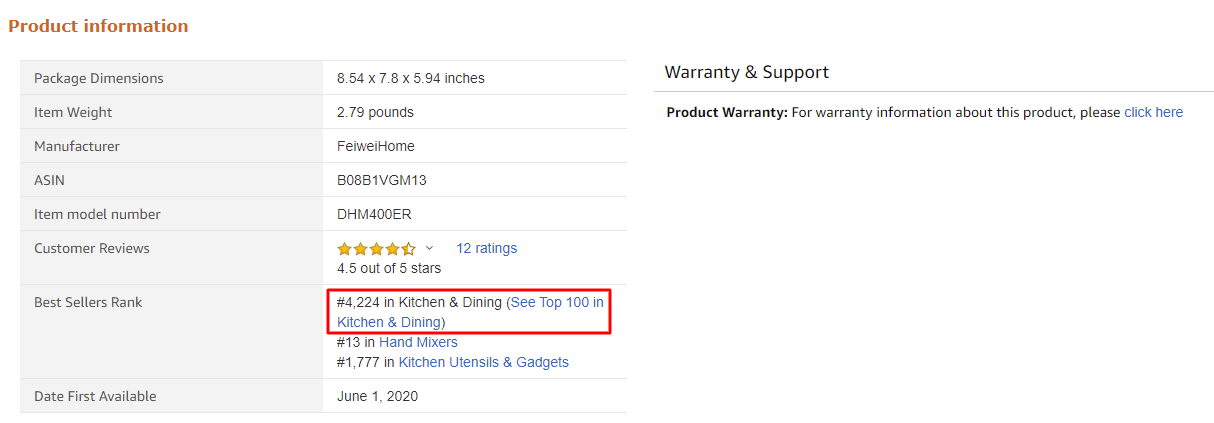
Note that several BSRs will always be specified here. The one in the main category is decisive for you; in the example (image 1) it is about "Kitchen & Household". The number ranges from 1 to (theoretically) unlimited, in the example 4224. The lower the BSR, the higher the demand. The product in the "Kitchen & Household" category, which is currently the most popular, therefore has a BSR of 1.
The bestseller rank of your product should be between 1 and 4,000 depending on the category. This ensures that you sell your product (assuming you have good ratings and a good listing) several times a day.
Seasonal demand and trends
Note: The BSR is dynamic, especially for items that have a seasonal variation in demand. Think, for example, of fairy lights, which are mainly bought in the pre-Christmas period. If you are looking for these products in November/December, they naturally have a higher BSR than in spring.
How do you figure that out? There are tools for this, e.g. "Google Trends" (https://www.google.de/trends/), which allows you to see how often a particular term is searched for over time.
Example of a search in the Google Trends Tool with the search term "light chain"(./images/word-image-13.png)
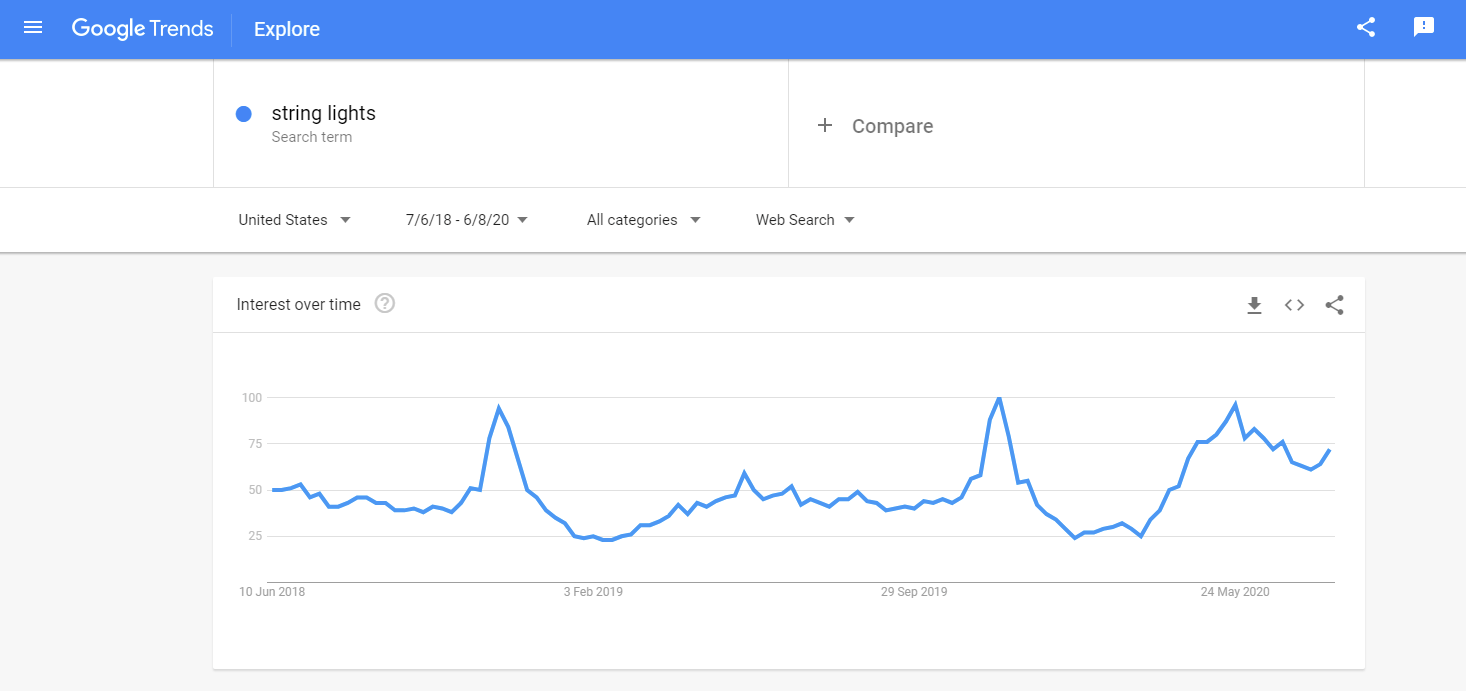
Two things can be seen in figure 2:
- the seasonality at the end of the year and
- the increase over time. It seems that every year more and more people buy or search for light chains.
It would be wrong to make the sweeping statement that products with seasonally varying demand should always be avoided. We just wanted you to know what you have to deal with. With certain products you earn a lot during summer - and during winter the opposite applies. Opt for "long-runners" if a constant turnover is important to you.
Unique selling proposition
If you are looking for different product ideas, you will soon realize that you are not the only one selling the product. Especially for products with high demand (see above), many sellers are busy. This makes it all the more important in these cases that you ask yourself why a consumer should buy from you in particular. Try to work out a unique selling proposition that sets you apart from the other offers. Unique selling propositions could include:
- Other colours, shapes, material
- Lower/higher price
- Additional product features
- More attractive packaging
- Better sales description
Tip: Study the reviews of your competitors carefully and look for weak points. Often you will find comments like "feels cheap" or "the zipper broke off after the first use". Then try to improve precisely these points in consultation with the supplier.
Consumer vs. durable goods
Generally, you should prefer products that are consumed quickly. This gives you the chance to find repeat buyers who either have the product sent to them as a subscription or simply click on "Buy again" in their order history.
Competition environment
The decisive factor for entry is that the large suppliers have not already divided the market for a certain product among themselves. A characteristic is, for example, the number of positive ratings that a particular product has received. If you find products with 250 or more consistently positive reviews, you will tend to find it harder to gain a foothold here than in a segment where your competitors only have 10-100 reviews. German buyers in particular are very cautious in their evaluation behaviour. So if a product has already received 250 reviews, you can assume that it has already been sold several thousand times. This is generally something positive (high demand!), but you have a lot of catching up to do before you get similar trust from buyers and from Amazon.
Take a close look at the ratings again. If customers tend to rate a product as average, you can gain a lot of ground with comparatively few good reviews. Provided your product reaches the buyers.
Generating ideas
Use your own experience
Use your own experience to get ideas for a successful product. Is there a problem for which you cannot find a solution (in the form of a product)? Are you using a product that you are enthusiastic about but have not yet come across that much? Is there a product that troubles you every day and you know how to improve it? Do you have a passion that you can bring to sales?
All these questions can help you generate interesting product ideas. Nevertheless, you should always question your own ideas. Don't let hobbyism drive you. Just because you find pink knitted sweaters for hamsters incredibly appealing doesn't mean others feel the same way.
Anticipate trends
There are companies whose job it is to predict trends and sell this information. Read through their publications and/or newsletters and link different ideas. Here are a few examples:
- Trend Watching: http://trendwatching.com/
- Trend Hunter: http://www.trendhunter.com/
- Springwise: http://www.springwise.com/
Jump onto the latest ideas
The Internet offers numerous platforms crowded with products, be it because they are evaluated, tested, photographed or (re)sold. Often these platforms offer "best-seller lists" where you can see which products are sold or accessed particularly frequently.
Look beyond the (German) border and check what is currently in demand on other markets.
Here is a selection of different platforms:
Blogs
Pinterest (https://www.pinterest.com/categories/popular/)
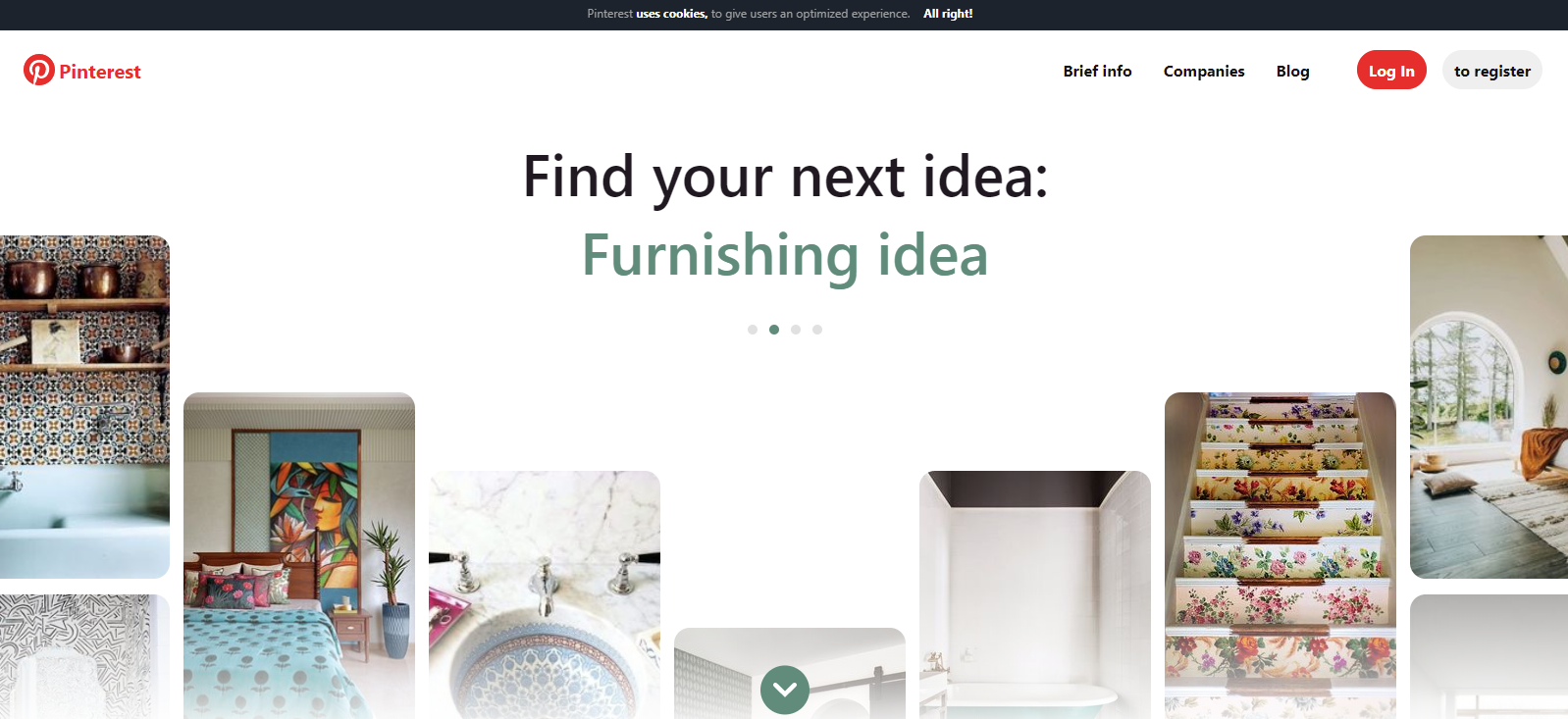
Uncrate (http://uncrate.com)
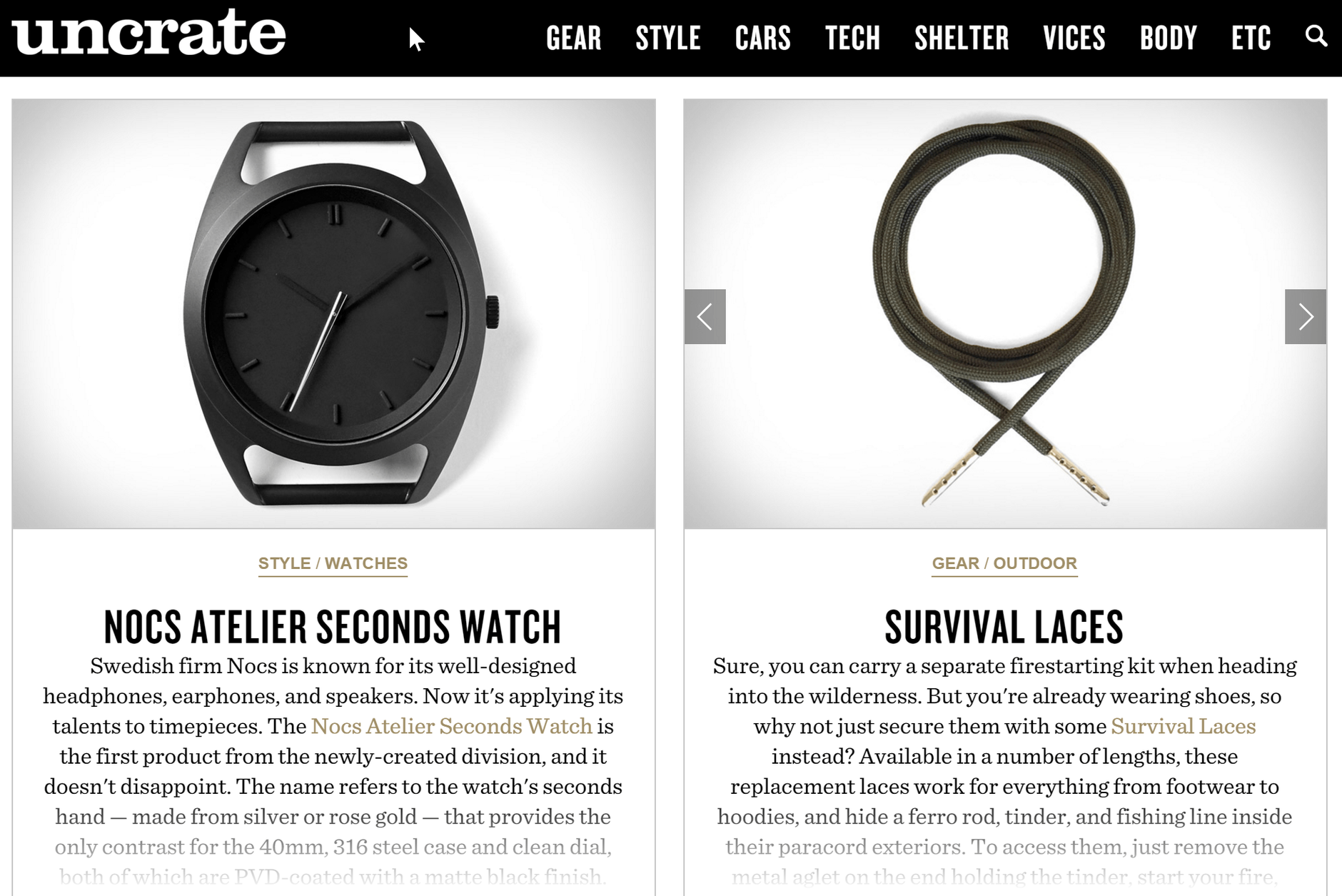
Bless This Stuff (http://www.blessthisstuff.com/most-viewed)
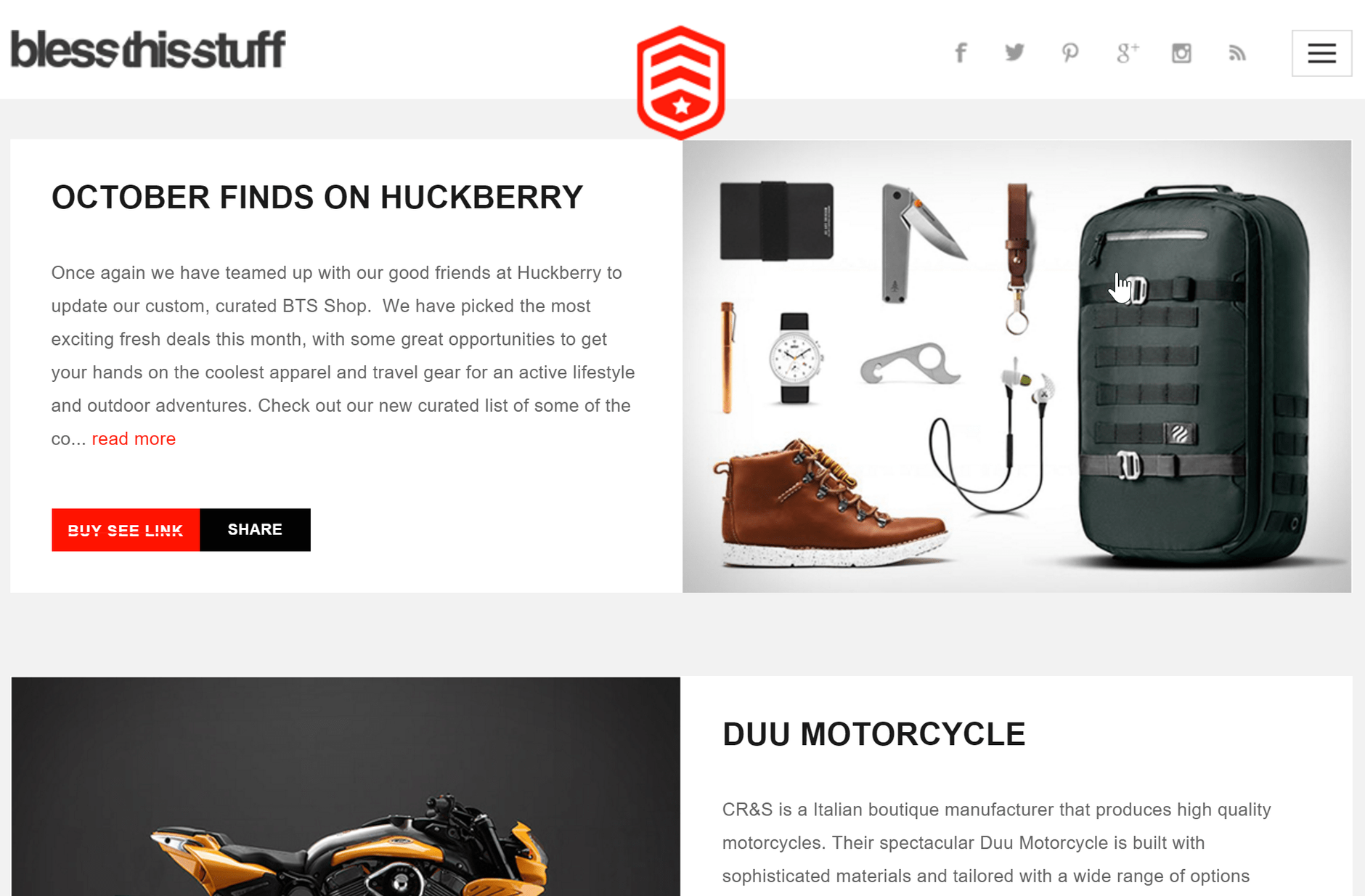
Fancy (https://fancy.com)
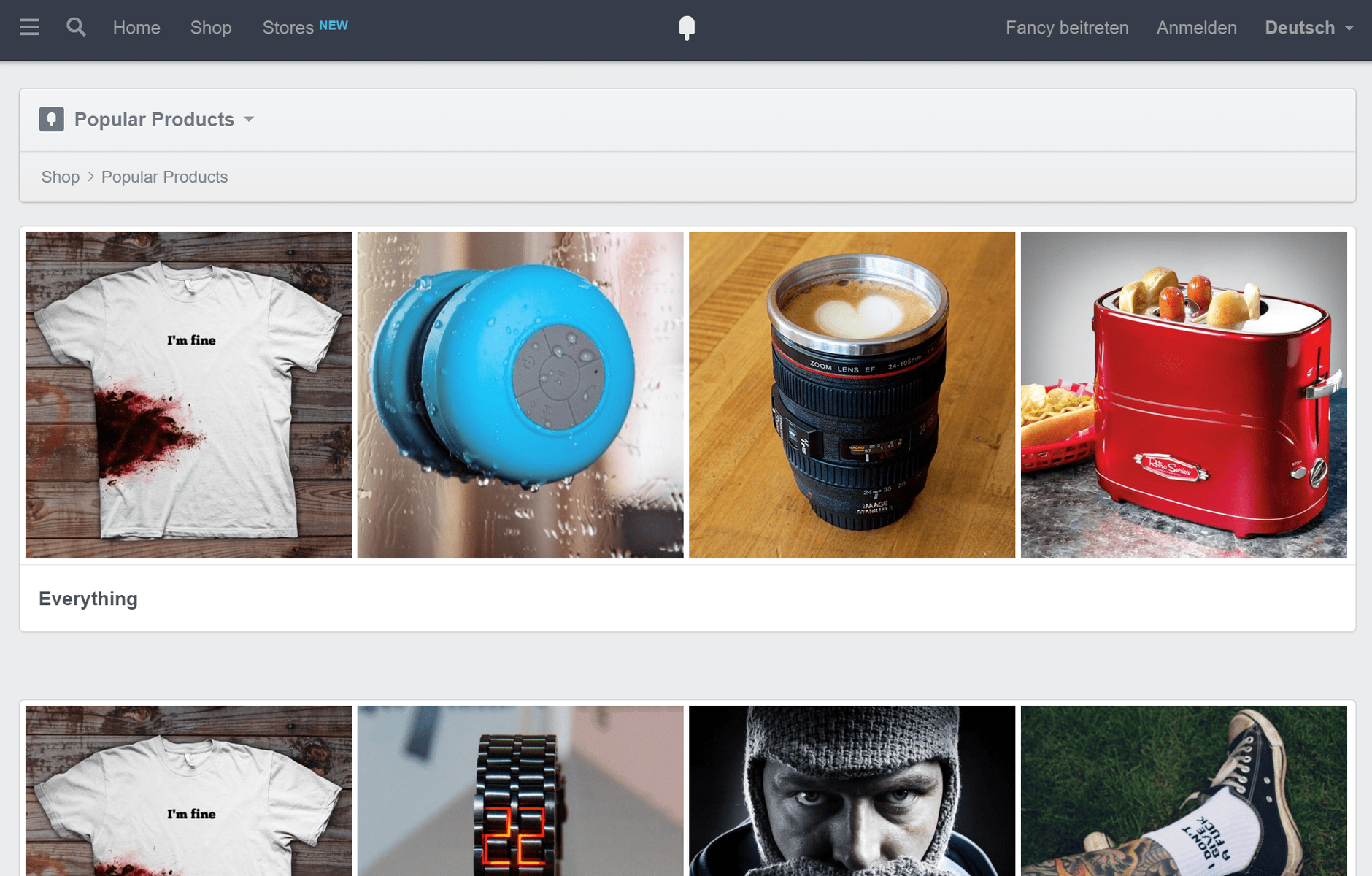
Cool Material (http://coolmaterial.com/gift-guide/)
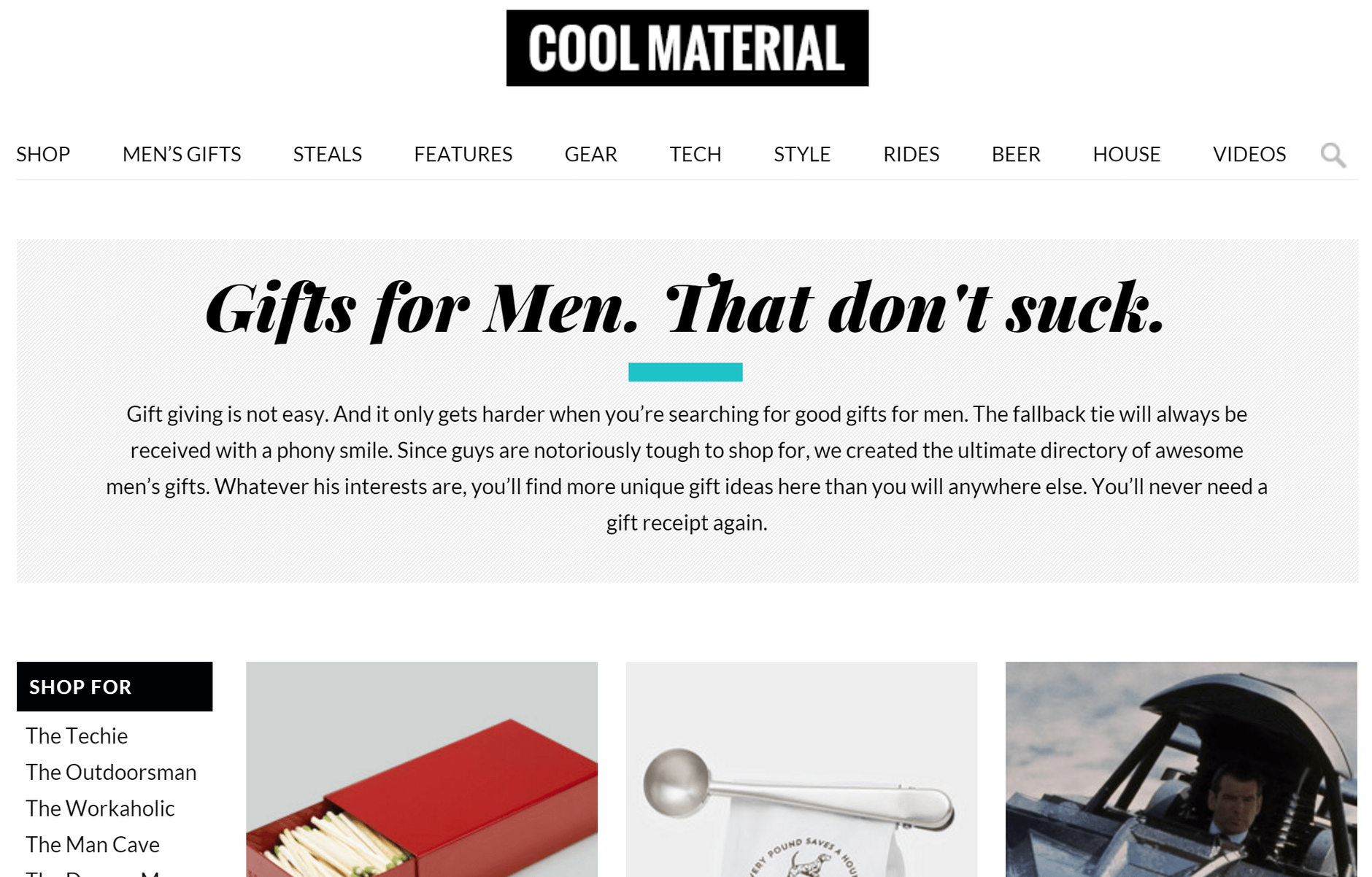
Supplier platforms
Alibaba Most Popular/Trending
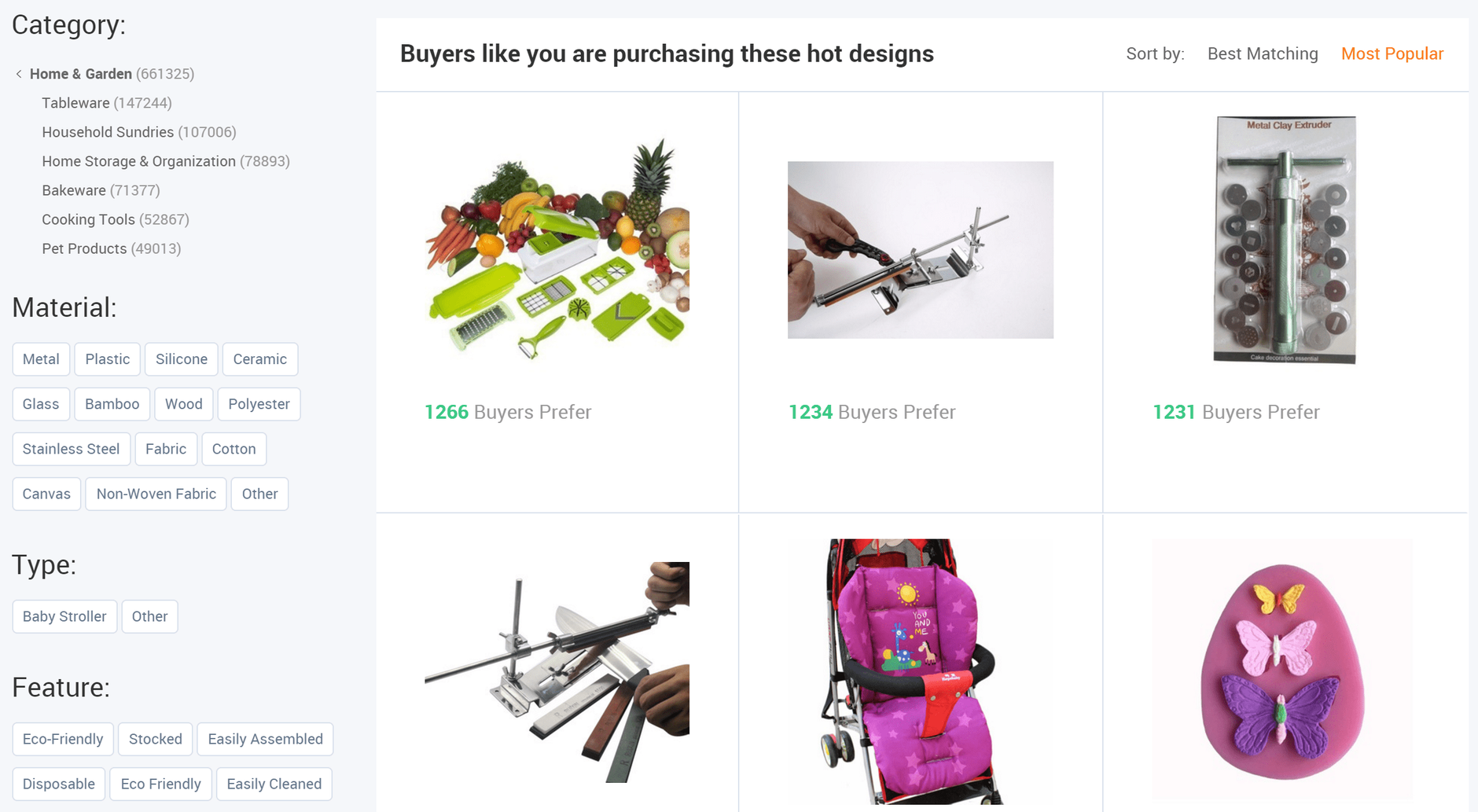
AliExpress Most Popular (http://www.aliexpress.com/popular.html)
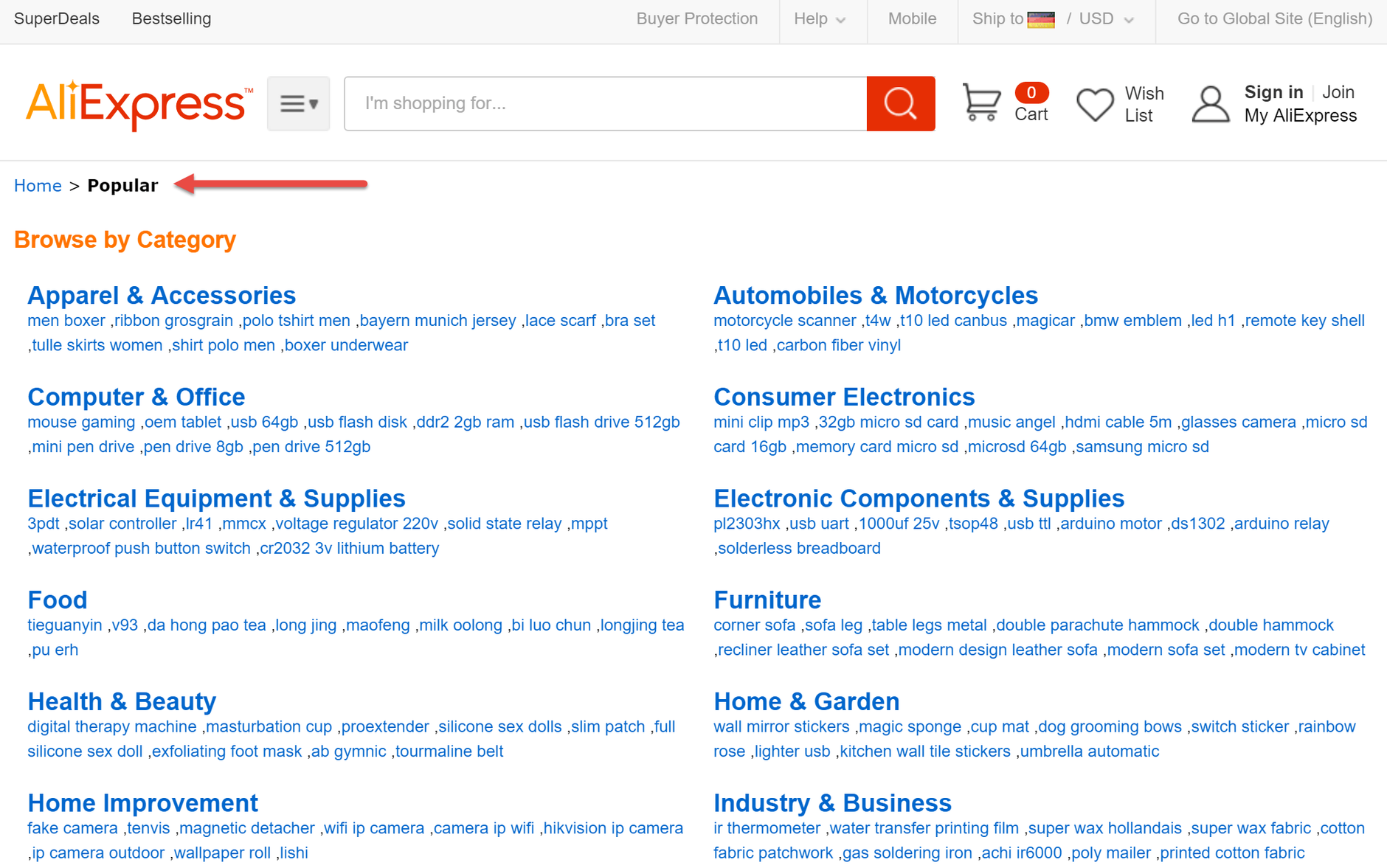
Made-in-China (http://www.made-in-china.com)
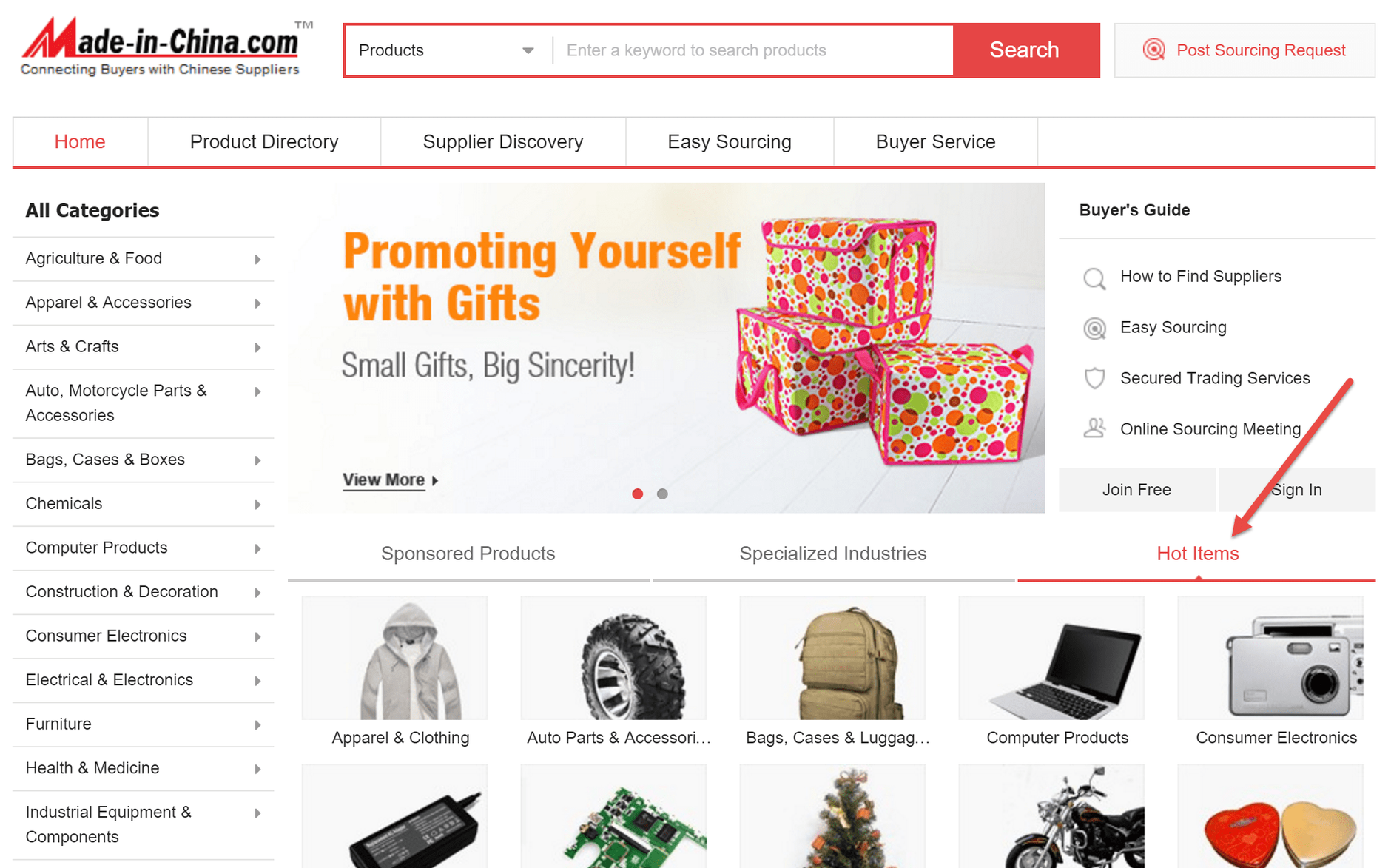
Other platforms
Amazon bestseller lists (http://www.amazon.com)
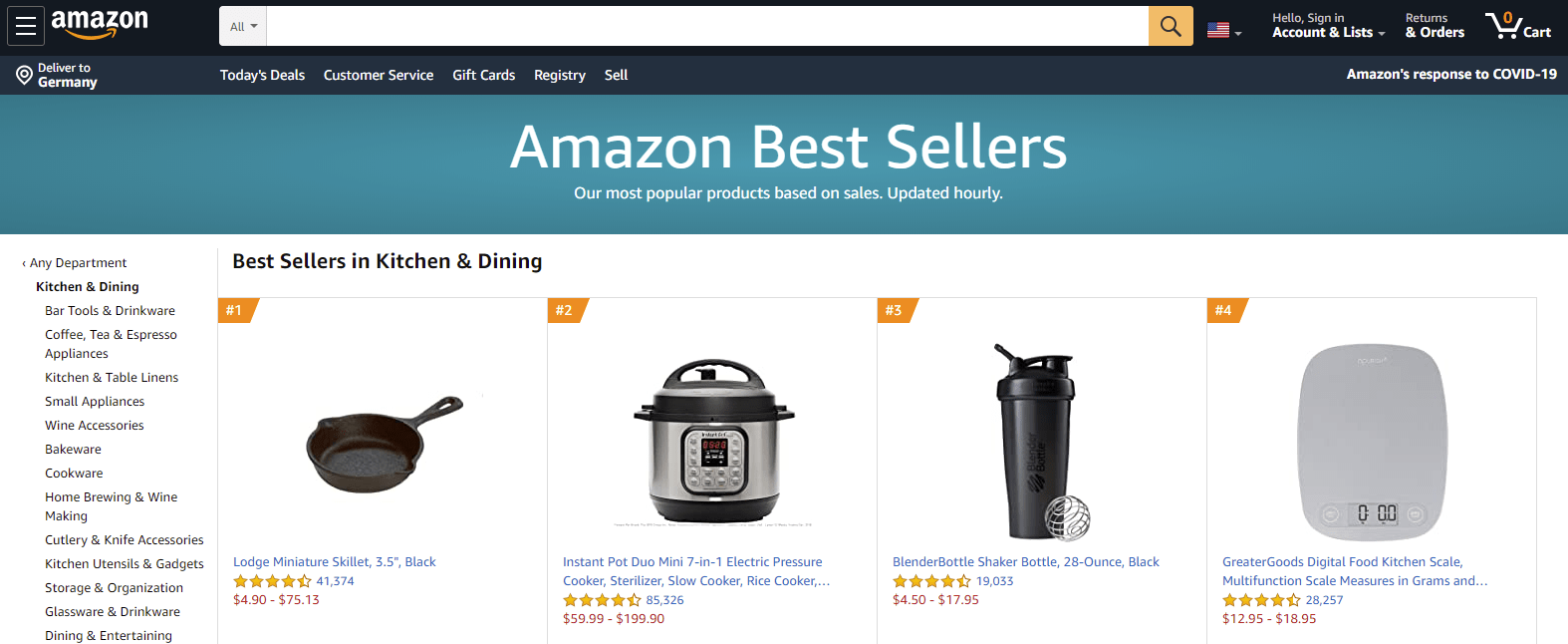
The AMALYTIX tool simplifies, among other things, bestseller research, in which more advanced filters can be applied:
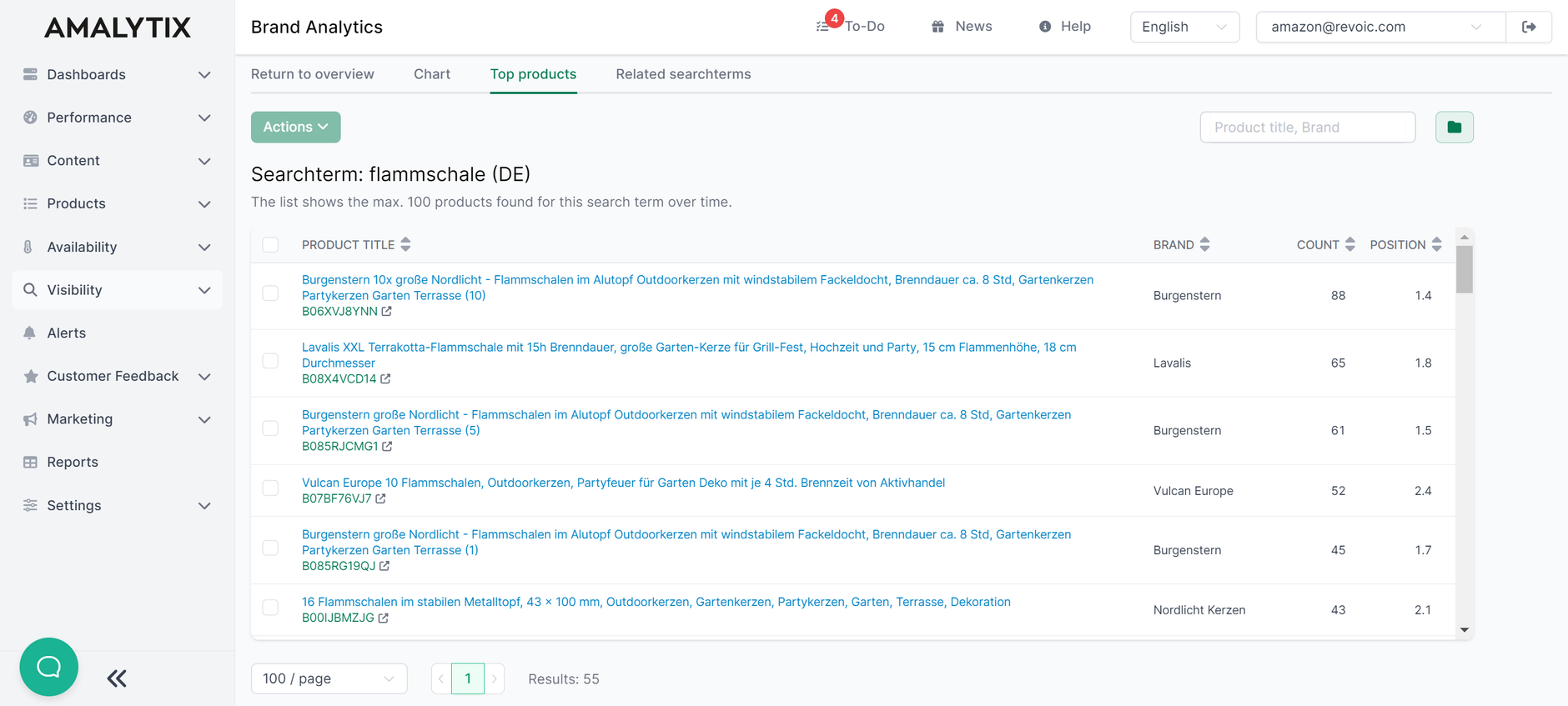
Etsy (https://www.etsy.com)
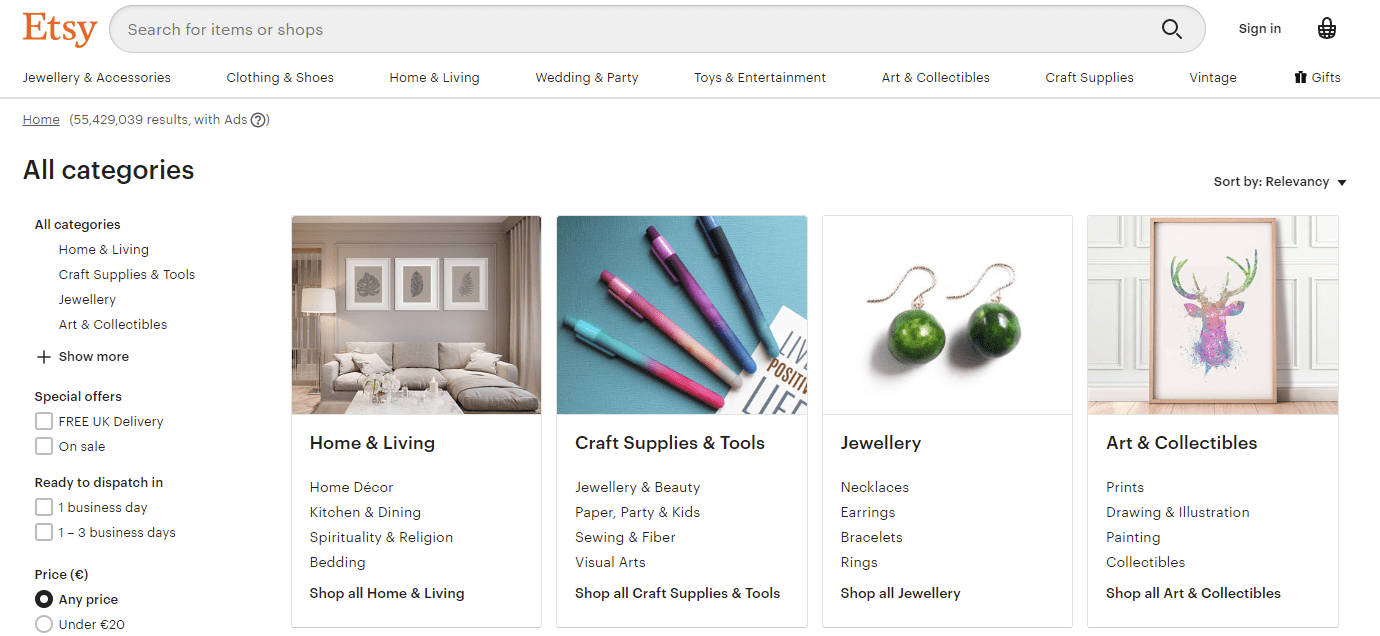
WatchCount (http://www.watchcount.com)
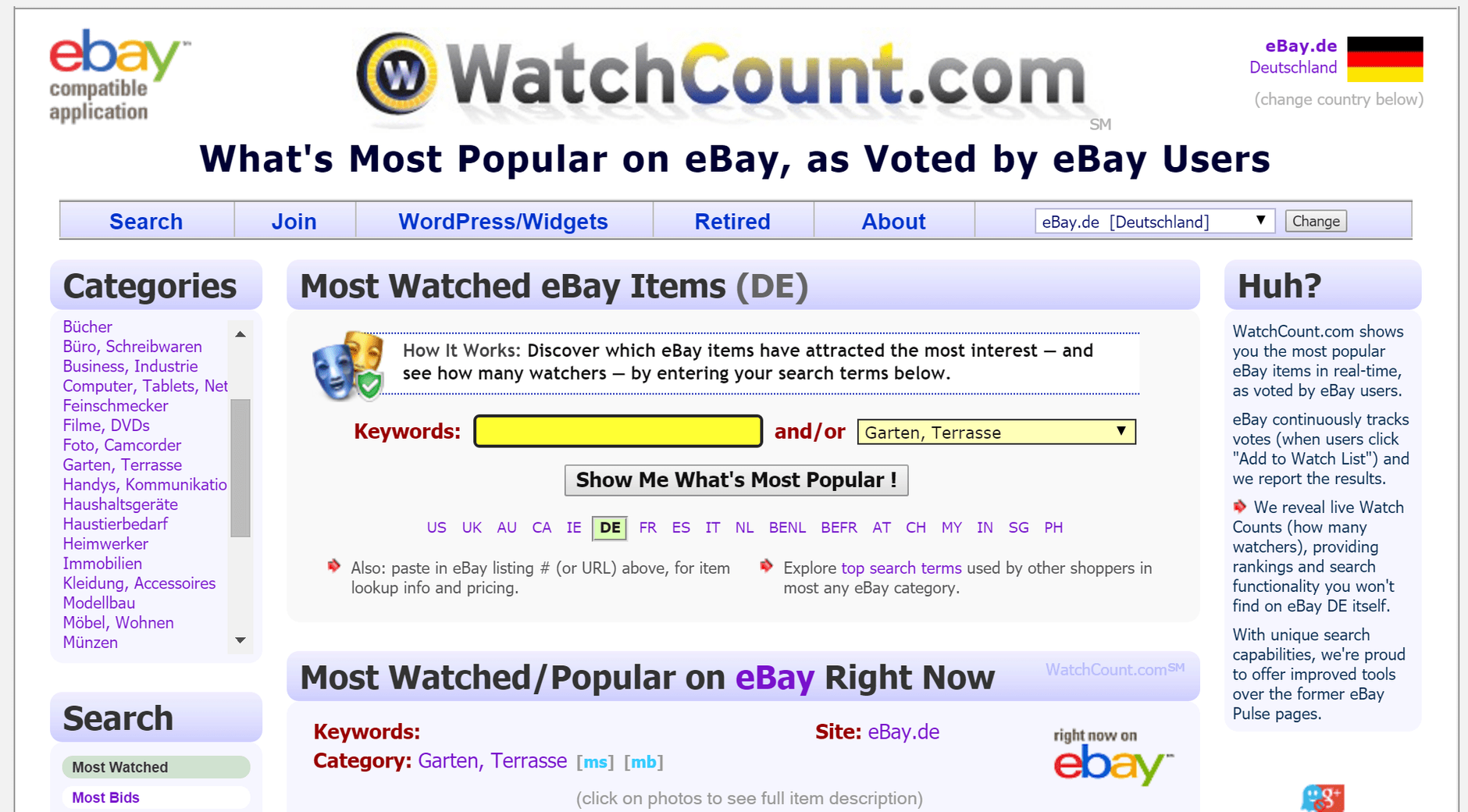
WatchCount is a platform that monitors eBay offers and records the number of observers and sales, among other things. This can then be used to filter out interesting articles. Besides eBay, various other marketplaces are supported.
Idea validation
You should collect about 20-30 ideas through these channels. Once you have collected them, it is time to filter out the product with the highest probability of success.
Enter all products line by line in a list and assign one point each for the following questions, provided that you can answer them with "YES". Enter these questions/points in columns.
- Product category is not limited (KO criterion if applicable?)
- Purchase price x 4 = possible selling price
- Small (fits in a shoe box) and lightweight (weight < 1kg)
- 15 € < selling price < 50 €
- Can be customized (logo, packaging, color, material etc.)
- BSR < 2000
- Idea for unique selling proposition available
- Consumer goods
- Can be sent via Amazon FBA (if necessary KO criterion?)
- Not sensitive during import/dispatch
- Can be replaced in case of a customer complaint without return
- Offers possibilities for subsequent products
- Demand is not seasonal
- Demand trend is stable or rising
- Competing products have poor or less than 250 ratings
- You are well acquainted with the product
- You would use the product yourself
- The product is not an electrical appliance
- The product is composed of one part
- The product is easy to understand (does not require a user manual)
That would look like this:
| Product | Small & lightweight | 10 € < Price < 50 € | … | Sum |
|---|---|---|---|---|
| Product 1 | 1 | 1 | … | 11 |
| Product 2 | 0 | 0 | … | 9 |
| Product 3 | 1 | 0 | … | 5 |
| Product 4 | 1 | 0 | … | 13 |
| … | 0 | 1 | … | 10 |
| Product 30 | 1 | 1 | … | 8 |
Don't be surprised: No product will achieve the full score. There will always be a compromise. At the beginning you should pay particular attention to points 1-4.
And one last tip: approach the matter as emotionlessly as possible, especially if you do not like the result. Do not fall into hobbyism without good reason, even if the section "I would use it myself" is part of the checklist. If in doubt, give preference to a product with more advantages.
Price calculation
The final evaluation includes a profitability analysis. And what is the use of the most beautiful product if it does not pay off in the end? You need to understand what costs are involved and what will be left for you in the end. The main cost components will be briefly explained below. It is assumed that you as the seller are entitled to deduct VAT, i.e. all costs are considered to be purely net. Paid and collected sales tax is not included, as this is a transitory item. If in doubt, consult your tax consultant.
The profitability analysis at unit level should include at least the following elements:
| line | content | comment | example |
|---|---|---|---|
| 1 | Sales price (gross) | The price the customer pays | 19,99 € |
| 2 | Sales price (net) | VK less 19% or 7% sales tax | 16,80 € |
| 3 | Amazon sales commission | Dependent on the category, usually lies between 7-20% of the gross sales price. Per category there are minimum commissions. | 3,00 € |
| 4 | Amazon-FBA-Shipping | Amazon-FBA-Shipping is added when Amazon takes over the shipping. Depends on product type, size and weight | 1,72 € |
| 5 | Amazon FBA Warehouse | Added when Amazon handles shipping. It depends on the volume of the product and partly on the storage period. The unit costs can be determined by quantity, volume and time period. | 0,02 € |
| 6 | Amazon additional services | Amazon offers various additional services, e.g. labelling at goods receipt | 0.15 € |
| 7 | Sum Amazon costs | Sum from 3-6 | 4,89 € |
| 8 | Unit cost | This includes all costs incurred to get the finished product to Amazon's warehouse. These are in particular the costs from purchasing, freight and customs | 5.48 € |
| 9 | Unit profit | Net sales minus Amazon costs and unit costs | 6,43 € |
For your unit costs (line 8), customs and freight costs are relevant in addition to the costs from the manufacturer. When calculating the customs duty, you must apply the duty rate to purchase and freight costs. You determine the rate of duty by means of the goods tariff number, which the manufacturer can give you. There are two platforms to help you: "TARIC" (offer of the EU) and "EZT online" (offer of the German customs).
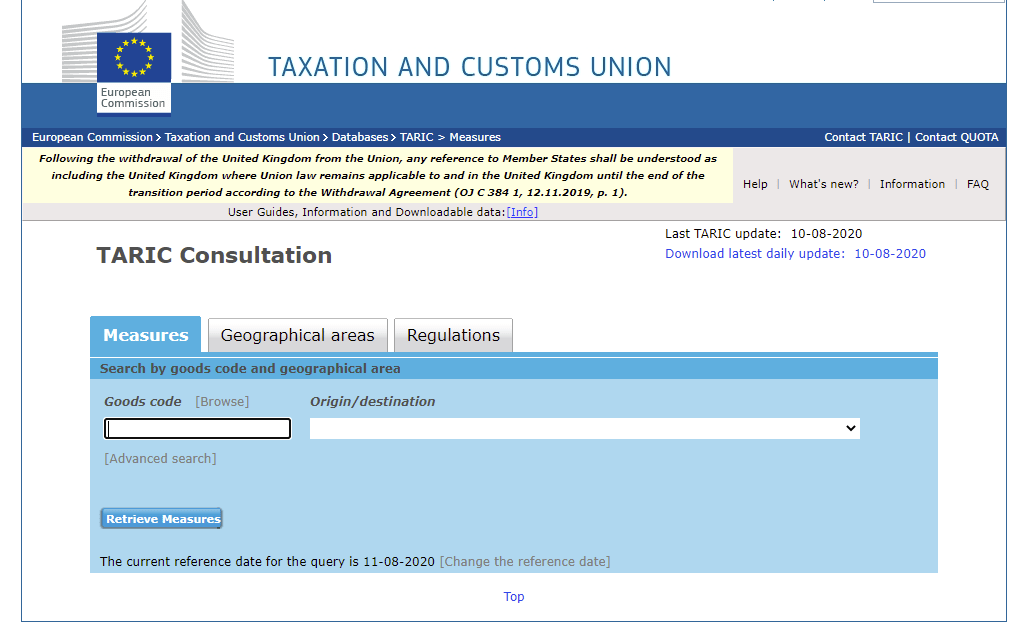
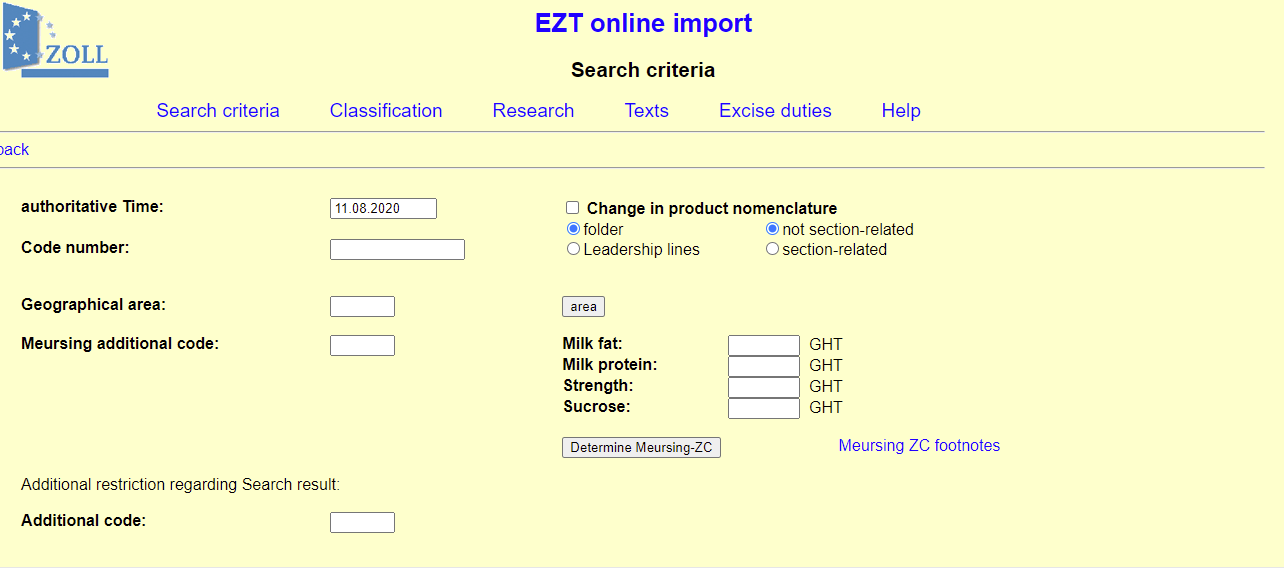
Example:
Assuming that the value of the goods is 1,000 euros and the freight costs are 200 euros, the customs value is 1,200 euros. You must apply the duty rate to this. For example, if it is 6 %, the duty is EUR 72. So you have to pay a total of 1,272 euros to get the goods to Germany. You may also need to add the cost of shipping to the Amazon warehouse. If you then divide the total amount by the order quantity, you will get your total unit costs. If there are still directly attributable costs for product images, packaging, advertising or similar, you must of course also include these costs.
If you would like to have a more detailed calculation, please also include the costs or missing sales that you incur for "free samples", e.g. the discounted fee to reviewers.
We also have published a free Excel sheet at free Excel sheet, which makes the product calculation very easy.


